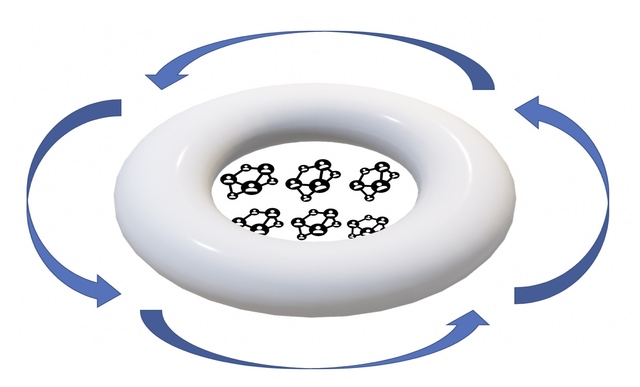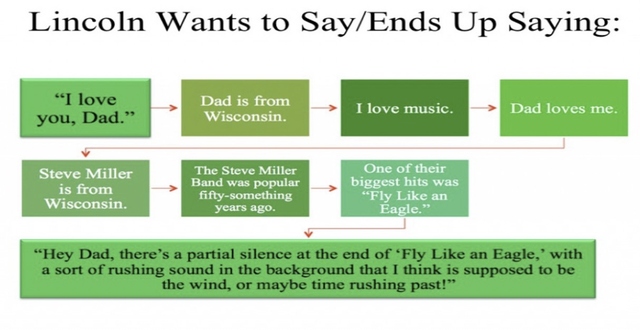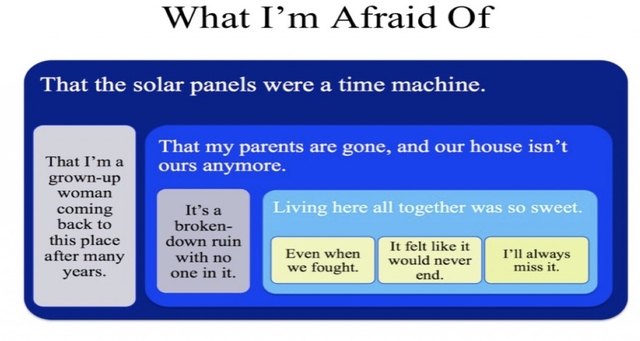Ergodic Textuality in Egan and Ozeki: The Rhetorical Dialogism of Time Being
By
2020, Vol. 12 No. 09 | pg. 1/1
KEYWORDS:
Human beings decided that time is linear. We continually assert that is made up of the past, present, and future, proceeding infinitely and mercilessly in an exclusively forward motion. Thus, our lives and our relationships are experienced linearly. Grounded in the fear of its purported rigidity and absoluteness, we lament time’s passing and the war it wages on our bodies and our minds. So, we conclude that we are powerless against it. Over its short history, humanity has proven itself to be epistemologically inclined, desiring to remain in the realm of culturally imposed ideals of “rational” thought and knowledge. Time cannot be understood as completely relative by any person permeated by this discourse because the reality of quantum mechanics would simply implode our stable, culturally embedded understanding of our world. But what exactly occurs rhetorically to an individual when literary fiction renders time relative? Jennifer Egan’s (2011) A Visit from the Goon Squad and Ruth Ozeki’s (2013) A Tale for the Time Being are two texts which deconstruct time through the deepest expressions of the human condition. Enacting elements of intersubjectivity and intertextuality, both texts engage in the mixing and remixing of multiple perspectives and texts with narratives which defy time as both a literary and thus cultural authority. Ultimately, these elements catalyze to realize a complex heteroglossia, a multi-voiced dialogism within the texts where the readers enter a process of conscious emergence as time beings, engaging in the ergodic non-trivial traversing of the rhetoric of fiction. In exploring the rhetorical effect of deconstructing time through fiction, we must first understand time in the terms of Dōgen, a Japanese philosophical and religious writer. Dōgen (2013) described time as “inseparable from self, from existence and from space. Time is being. Time is no other than ‘time being’” (p. 91). Thus, the human epistemology of time is an idiographic construction. Time functions as a semiotic symbol that reinforces dominant embedded cultural assumptions about the sovereignty of time’s will and the passivity and powerlessness of human beings against an absolute philosophical notion and quantum force. Our relationships are dictated by linearity, by the epistemological categorization of who belongs where in our memory. Our friends, family, acquaintances, strangers met in passing etc., are all forced to exist in our lives according to how they are arrayed in our understanding of life’s linearity:
Figure 1: Course of Human Relationships Abiding by Linearity of Time So, let us deconstruct this notion through Dōgen’s terms, defining first what time is not: it is never absent; it is not a force separate from ourselves, but flowing through us; it is not an absolute power, an impenetrable barrier, an impermeable philosophical notion. As Dōgen (2013) describes, “People only see time’s coming and going and do not thoroughly understand that the time being abides in every moment” (p. 91). We can no longer content ourselves with the idea of being ravished by the merciless linearity of passing time, for the act of recognizing time’s relativity is to accept the fear of the arbitrary. It is to acknowledge the duplicity of humans as time beings, not entities separate from its force and simply subjected to it, but an indistinguishable part of its whole. It penetrates the barrier of accountability for action or inaction, for “the way the self arrays itself is the form of the entire world” (Dōgen, 2013, p. 92). If the self is consciously arrayed as a part of time and not subservient to it, we experience an unbinding of hierarchy both with time and with how we experience other humans as time beings. Thus, the concept of time being is reconceptualized beyond Zen Buddhism by Dōgen, now situated in a literary theoretical framework. Becoming conscious of time and its constant movement and non-linearity in literature is the process of the reader emerging through the text and into life. Consequently, time being can be understood as a dialogic rhetorical practice that can be enacted by the conscious reader who recognizes its fluidity and relativity. As the characters of A Visit from The Goon Squad and A Tale for The Time Being flow through time, time simultaneously flows through them. A Visit from the Good Squad achieves this through its composition of non-linear narratives focusing on the intermingling of human relationships. In A Tale for the Time Being, Ruth is connected to time itself and to other time beings through Nao’s diary, entering Nao’s now in Ruth’s own now. The relationships between the characters in this experience creates webs of meaning-making not constricted by the rigidity of time’s traditional cultural construct. We are constantly connected to the people of our past, present, and future in non-linear experience. This moment of recognition enables the reader to attain a sense of oneness with time in a nonhierarchical relationship to other time beings, ultimately leading to critical reflection through the rhetorical effect of fiction. This rhetorical understanding and effect of time being is demonstrated in the figure below, wherein the blue arrows represent constant movement of time, which represented by the white 3D graphic with no beginning or end. Indistinguishably within time and also a part of it are the webs of relationships between time beings, no longer separated by linearity. This is how the readers experience time in the two novels:
Figure 2: Webs of Time Beings a Part of the Forces of Time [Rendered Relative] But what are the strategies by which fiction achieves this figure and deconstructs the idiographic symbol of time in order to generate time being as a practice of the reader? Grounded in Sartre’s writings on existentialism, his exploration of subjectivism will situate a modification and addition to his concept of intersubjectivity. Sartre (2004) says, “Let us at once announce the discovery of a world which we shall call intersubjectivity; this is the world in which man decides what he is and what others are” (p. 358). In the process of discovering one’s individual subjectivity, we inherently must encounter the subjectivity of others through the delineation of lived experience, because “one discovers the cogito not only for himself, but others as well” (Sartre, 2004, p. 358). This cogito is the validation of existence as a result of self-awareness. Through his existentialist framework of subjectivism, we may apply this process in literary fiction, wherein we are exposed to new perspectives through narrator, author, character, implied author, etc. This is the forging of intersubjectivity; it is the constant layering and remixing of voices in a text. Analogically, we may relate this concept of intersubjectivity to intertextuality, wherein multiple texts are interrelated within a larger work of fiction. This could be manifested as simple or extensive references or integration of texts/forms of text outside of the novel. Used in tandem, these two elements contribute to the creation of an unbounded rhetorical space. Thus, we can establish that the reciprocity of intersubjectivity and intertextuality conceives of a text which breaks down ideological and literary systems, creating a complex rhetorical space which conducts a conglomeration of mixing voices. As we become aware of new perspectives and texts, our own subjectivity is deconstructed and disseminated, forcing us to reexamine how we perceive time through dominant idiographic lenses. These qualities of intersubjectivity and intertextuality that will later catalyze to the concept of the heteroglossia of ergodic textuality are manifested in the narrative mechanisms of the texts themselves. Jennifer Egan’s A Visit from the Goon Squad is structured as thirteen different chapters with thirteen different perspectives, none abiding by chronological linearity. Included immediately after the copyright page of the book are two quotes by Marcel Proust from In Search of Lost Time: Poets claim that we recapture for a moment the self that we were long ago when we enter some house or garden in which we used to live in our youth. But these are the most hazardous pilgrimages, which end as often in disappointment as in success. It is in ourselves that we should rather seek to find those fixed places, contemporaneous with different years (Egan, 2011, Front Matter). While the first of which is about making our own being the locality of time, rather than letting physical locations bear the significance of linear experience, the second quote focuses on relationships, saying, “The unknown element in the lives of other people is like that of nature, which each fresh scientific discovery merely reduces but does not abolish” (Egan, 2011, Front Matter). Introducing humanity’s epistemologically means of functioning, the integration of Marcel Proust brings into discussion the importance of intertextuality in how Egan represents time in the novel. The text is already integrating elements of intertextuality with these significant quotes which set up the structure of the novel. Each character is on a pilgrimage to either return to their youth and remain in a state of nostalgia or to escape the failures of their past. Consequently, they lament their professional failures (many with the punk rock scene), but they more seriously grapple with broken, fragmented, or lost relationships. With no clearly dominant protagonists (only the primary interconnectedness of Sasha and Benny’s stories) or overarching plot/strong trajectory of narrative, each chapter can function as a self-contained short story, capable of standing on its own from the rest of the chapters. In Egan’s structure, time is not passively coming and going, but abiding in every moment in its refusal to conform to conventions of linearity in literary form. By nature, the intermingling of these freestanding narratives creates a simultaneous intertextuality of stories, enabling Egan to explore perspectives from the first and third person which results in a dialogism of intersubjectivities between the characters. Similarly, beginning with the intersubjectivity and intertextuality of Ozeki’s A Tale for the Time Being, the text’s dialogic narrative structure is just as significant to its rhetorical effect. The novel switches back and forth between the perspectives of Ruth Ozeki as a character, the struggling novelist (the second self of Ruth Ozeki the actual author), and Nao, a young Japanese diarist experiencing bullying and difficulties with her family, specifically her suicidal father. Within Ruth’s perspective, there are the subjectivities of Oliver and other characters like Muriel and Benoit, and within Nao’s we have primarily Jiko and Henry’s. However, we also have the intertextuality of Haruki #1’s letters written in French to Jiko, in addition to Benoit’s translation of his letters, the annotations Ruth makes throughout the novel explaining Japanese words, terminology, and culture, Dōgen’s concepts of time through philosophical and religious texts, and Nao’s diary itself as an integrated text to the narrative structure. Each part begins with a quote either from Dōgen or Marcel Proust. For example, Part II begins with a quote from Le temps retrouvé: In reality, every reader, while he is reading, is the reader of his own self. The writer’s work is merely a kind of optical instrument, which he offers to the reader to permit him to discern what, without the book, he would have perhaps never seen in himself. The reader’s recognition in his own self of what the book says is proof of its truth (Ozeki, 2013, p. 109). To reinforce this aspect of meta-narrativity with Proust, Nao’s diary itself is wrapped in the cover of this Marcel Proust novel. Ozeki, like Egan, seems to be entirely aware of the optical instrument she is holding up to the reader by grappling with issues of time and human relationships as Ruth desperately reaches into the past in search of Nao, ultimately unable to live in her own now. Thus, in the process of comparing these two texts, even the novels themselves become intertextual with one another in their integration of Proust to the themes of time. Both novels are self-reflexive in their awareness of time as the dominant theme in the stories, enabling the reader to also become self-reflexive in their own lives, critically reflecting on their perception of time and how it might impact and shape them as individuals, as well as their relationships with others. The catalyst of these two interacting elements of intersubjectivity and intertextuality in these metanarratives is manifested as a reconceptualized version of the Bakhtinian concept of heteroglossia. Although Bakhtin defines heteroglossia as “another’s speech in another’s language,” as a type of “double-voiced discourse,” the reach of heteroglossia and its trajectory can be expanded to a more multi-voiced and multi-textual discourse (Bakhtin, 1986, p. 324). In this framework with Dōgen and Sartre, heteroglossia then becomes the product of intersubjectivity and intertextuality. It is the mode of meaning-making in a text, the climax of an “internally dialogized” process in the reader (Bakhtin, 1986, p. 324). Thus, the “novelistic dialogue” between various characters in conversation with other characters and an array of texts creates critical moments of transcendence in the reader’s experience of the novels, and thus of time (Bakhtin, 1986, p. 324). Just as the author is free “from a unitary and singular language” in enacting heteroglossia, the reader also attains “a freedom connected with the relativity of literary and language systems” (Bakhtin, 1986, pp. 314-315). This liberation from the trivial, singular subjectivity (and even the less trivial double subjectivity of double-voiced discourse) is a result of the constant mixing of these character and textual zones. These interactions and clashes of zones enables both novels to transcend the genre of fiction, transforming into the fictive ergodic literature. For something to be ergodic, it does not have to be a cybertext in a media category, as its author Aarseth (1997) originally outlines in Cybertext: Perspectives on Ergodic Literature. Rather, ergodic literature constitutes any text which requires the reader to actively engage with the narrative, where “non-trivial effort is required to allow the reader to traverse the text” (Aarseth, 1997, p. 1). The reader is no longer lethargically and passively scanning words on a page. Aarseth compares this to the concept of the labryinthine, which is irreconcilable with linearity, “signifying a complex design, artistic order and chaos (depending on point of view), inextricability or impenetrability, and the difficult progress from confusion to perception” (Aarseth, 1997, p. 6). In Egan and Ozeki’s novels, the narrative structure and thematic content means that the reader (in different ways) must grapple, they must climb and stumble, they must think. Egan’s Powerpoint chapter, titled “Great Rock and Roll Pauses by Alison Blake” represents this climax of multi-voiced and mult-textual dialogism in ergodic textuality. Firstly, it situates us temporally in “May 14th & 15th, 202-” (Egan, 2011, p. 235). We know we are in the future, but the decade remains unknown, which is pertinent to positioning the text in Dōgen’s understanding of time as flowing, rather than rigid. Set in the future, the format of the Powerpoint itself is intertextual. But it also contains dialogic exchanges between intertextual rock and roll songs and the subjectivities of Alison, her brother, Lincoln, her father, Drew, and her mother, Sasha. The chapter conveys the intricacies of their relationships and the importance of time:
Egan, 2011, p. 249 The focus on pauses in rock and roll songs is the suspension of how we understand now in our lived experience. Lincoln understands the significance of how time affects the absence of music in songs. This process of thinking, of emergence, conveyed by the slide demonstrates Lincoln’s autism in how he struggles to connect with his father. The critical analysis of time in these intertextual songs demonstrates Alison’s mastery of time being through music, simultaneously enabling the reader to experience intersubjectivity and intertextuality in her own experience of relationships and time. Many of the previous stories in the book conveyed the struggles of adults with time, but Alison and Lincoln represent a youthful self-awareness, making the subjectivities more poignant and the format more effective in a duality of non-conventionality:
Egan, 2011, p. 299 In this chapter, we not only learn what becomes of Sasha (since we technically began the book with a story that conveyed the complexity of her relationship with materialism and difficulty in relationships), but we also are required to non-trivially traverse the text. When the chapter begins, we have no idea who Alison is until her web of temporal relations of meaning is tied to Sasha. Drew is a minor character in the novel, a friend of Sasha’s and Rob’s who once wanted to become president but is now a surgeon. These webs of meaning enhanced by the text’s intertextuality and intersubjectivity creates a complex heteroglossia of more prominent characters related to minor ones, and new characters in the future we have never met before. Inherent to its format and narrator. Thus, the meta-narrativity of Alison’s chapter creates an integral tone of self-reflexivity. By the reader reflecting on the dialogisms of time affecting Alison’s life, they must also reflect on their own as a result of its ergodic textuality. However, what occurs rhetorically when a novel fully breaks through the conscious process of emergence, moving beyond reflection and to agency and action? Ruth’s dream sequence epitomizes this climax of heteroglossic narrativity to non-trivial traversing of the text. Ruth changes Nao’s now, the past, in her own now, which is the present. At first, “Time swells, overwhelming her. She tries not to panic. Tries to relax and hold herself loosely, resisting the instinct to tense and flee” (Ozeki, 2013, p. 348). This description of Ruth’s struggle against time is also the effects on the reader as time overwhelms the narrative. Jiko holds her glasses out to Ruth, so she takes them and the “murkey lenses smear the world, as fragments of the old nun’s past flow through her: spectral images, smells and sounds” (Ozeki, 2013, p. 348). Letting the time being of Jiko’s past flow through her, Ruth realizes that she needs to find Nao, “Nao, she thinks, Nao, now, nooooo.” The word morphs and changes as time flows through Ruth and searches for Nao “in the mirror, a logical place, but she sees only a reflection of herself that she does not recognize.” Identifying with Nao but only able to see a refraction of her own image, the Jungle Crow guides her to Haruki #2. He asks if Ruth is the one he is waiting for and Ruth says that she is a friend of Nao’s, that she “met her walking on a beach. It was after a storm” (Ozeki, 2013, p. 351). In this sense, Ruth has completely aligned her textual experience in Nao’s diary with a physical one in her present. Ruth tells Henry that she knows what he is planning to do, explaining that Nao plans to kill herself too if he goes through with it, prompting Henry to decide that he must find Nao instead of committing suicide. In the enunciation of his life, there is an integral moment of narrative change. Ruth has not only entered the past, but she is living in its effects of experience like it is her present. Ruth realizes she is holding Haruki #1’s composition book. Knowing her way to the temple, she places it in Jiko’s box with Haruki #1’s paper of “remains.” (Ozeki, 2013, p. 354). She then expands into the world with long black sleeves spreading, and she feels contentment, finally relaxing. The next day, Ruth discovers that the last pages of the diary are finished. The reader (Ruth) enters the narrative, just as we (the reader) enter the narrative, but she actually changes the ending. This entire dream sequence epitomizes the process of practicing time being, the experience of the reader engaging with a text in a non-trivial way, traversing it in order to let time flow through both their now and the narrative’s now. Time is not an absolute authority for Ruth, but a penetrable, mutable entity. As the reader of Nao’s diary, Ruth has the power to not only change her narrative, but traverse time in her process of emerging through the ergodic textuality. In restoring Ruth’s agency, the novel is self-reflexively restoring the reader’s agency. The ergodic nature of these texts requires readers to confront their fears of time as a linear and ruthless force, acknowledging that it never arrives or disappears, but it is ever present and entirely relative, constantly connecting all time beings in webs of interconnectedness and non-separation. Beyond this, we are never separated from time, but we actually have the power to affect change in it. The synthesization of intertextuality and intersubjectivity catalyzes heteroglossia to its peak point of meaning-making in Egan’s integral Powerpoint chapter and Ozeki’s dream sequence. Thus, the ergodic textuality of these novels enables the reader to grapple with fears of the unknown future, their lingering memories from the past, and their anxieties of the present. For much of the Goon Squad, it was the fear of mortality, the fear of professional and relational failure, the fear of the immutable mistakes of their youth. For the time beings of Ozeki’s novel, it is the fear of a lack of human connection, a fear of the self, a fear of a lack of agency in their own narratives. In this dialogic process, it is fitting that A Visit from the Goon Squad is grounded in Proust’s In Search of Lost Time, while A Tale for the Time Being is indelibly interconnected with Proust’s Time Regained. This is perhaps how to best understand the heteroglossic narrative mechanisms of each text, where the process of time being as a rhetorical practice occurs in two essential stages of ergodic, non-trivial effort when reading literary fiction. The first stage is self-awareness and critical reflection, where Egan’s text enables the readers and the characters to simultaneously engage in a conscious process of emergence of their fears, traversing the text through the non-linear narrative. Ozeki’s work can be understood as the product of Egan’s process, the second stage of rhetorical dialogism where the reader not only engages in the process of emergence through the text, but they are also capable of arraying themselves in a non-hierarchical relationship with time through fiction. Thus, time being as a practice of rhetorical dialogism enables the reader to at once be a part of time in the now and let it flow through them, destabilizing deeply embedded cultural notions of time’s ideographic authority. ReferencesAarseth, E. J. (1997). Cybertext: Perspectives on Ergodic Literature (UK ed.). Johns Hopkins University Press. Bakhtin, M. M. (1986). The Bildungsroman and Its Significance in the History of Realism. In V. W. McGee (Trans.), Speech Genres and Other Late Essays (pp. 10–28). University of Texas Press. Dōgen. (2013). The Essential Dogen: Writings of the Great Zen Master (P. Levitt & K. Tanahashi, Eds.). Shambhala. Egan, J. (2011). A Visit From the Goon Squad. Anchor. Ozeki, R. (2013). A Tale for the Time Being. Penguin. Sartre, J.-P. (2004). Existentialism. In G. Marino (Ed.), Basic Writings of Existentialism. (pp. 341–368). Modern Library. Suggested Reading from Inquiries Journal
Inquiries Journal provides undergraduate and graduate students around the world a platform for the wide dissemination of academic work over a range of core disciplines. Representing the work of students from hundreds of institutions around the globe, Inquiries Journal's large database of academic articles is completely free. Learn more | Blog | Submit Latest in Literature |




















